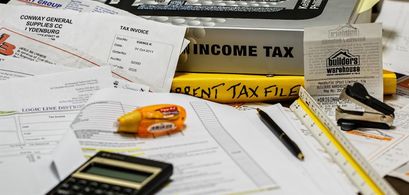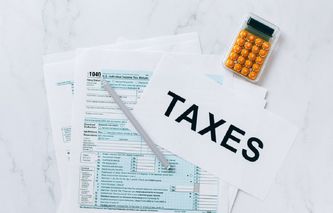Assembling the required documentation ahead of time will minimize the effort it takes to fill out an income tax return. With the availability of electronic files and the help of sophisticated software tools, the process can be fast, secure, and comprehensive.
In this article, we're going to provide a stepwise approach to completing a federal tax return. The technique will follow along with the IRS Form 1040, and help taxpayers identify the information needed to complete each of the major sections found in an individual tax return.
Tax Preparation Help
Taxpayers have the ability to choose from several options to help prepare a federal income tax return. These options include: filling out the paper forms, using an e-file provider, or utilizing a tax preparation software package. These last two choices are extremely helpful in putting a return together in a fast and efficient manner; even better, they're sometimes offered for free.
e-file Help
Using one of the many IRS e-file providers to help prepare and file income tax returns electronically is a very popular choice today. The most difficult part of this process is figuring out which provider's service offers the best value.
In many instances, taxpayers will qualify for free preparation of their federal tax forms; although there is oftentimes a fee to e-file a state return. The "interview" technique these companies use has been perfected over the years. The entire process is fast, simple, and thorough.
Tax Preparation Software
Taxpayers that aren't comfortable using the assistance of an online provider can purchase tax preparation software and install it on their home computer.
Using the same interview techniques as the e-file providers, the tax preparation software can quickly determine which sections of the federal tax code apply to each individual. Once completed, the tax forms can be printed out and mailed, or filed with the IRS electronically.
Tax Paperwork Checklist
It's possible to speed things up by having the paperwork needed to complete these forms at the start of the process. The recommended checklist from the IRS includes:
W2 forms from all employers.
A 1090G, if a refund of state or local income taxes was received.
Any 1090 Form for dividends, income tax withholding, and other forms of income.
Receipts for any itemized deductions to be taken on Schedule A.
Records and receipts for any other income or expense that might impact a taxpayer's federal income tax liability.
Social Security numbers for all dependents.
Bank account numbers, if planning to get a refund or pay taxes due electronically.
Adjusted Gross Income
The first major milestone is Adjusted Gross Income: Line 36 on the Form 1040. Most taxpayers will know their tax filing status and be able to identify sources of income without the aid of software or a tax professional. However, once past the interest income associated with bank accounts, the tax law starts to get a bit more complex.
Help with Capital Gains
One of the more intricate tasks is the calculation of capital gains tax. The law changed several years ago, and the implications for long and short-term capital gains are more complicated than in the past. We put together some information aimed at supporting taxpayers in this area in our article: Capital Gains.
Following the American Taxpayer Relief Act of 2012, there are now three rates that apply to long-term capital gains. Individuals in the 10% and 15% federal income tax brackets pay 0% while those in the 39.6% bracket pay 20%; all other taxpayers owe 15%. Short-term capital gains are taxed at an individual's "normal" incremental tax rate.
Student Loans and IRAs
Some of the other stumbling blocks that might be encountered on the way to Line 36 are IRAs and student loans. In 2020 and 2021, taxpayers that qualify can deduct up to $2,500 in student loan interest, regardless of whether they itemize their deductions. This deduction is phased-out starting at $70,000 (in both 2020 and 2021) for single filers and $140,000 (in 2020 and 2021) for joint filers.
Our article on IRA rules can help individuals to figure out if they're eligible for an IRA contribution that is tax deductible or tax deferred
Taking Tax Deductions
For many taxpayers, the favorite part of a tax return deals with itemized deductions. Unless the standard deduction is taken, IRS Schedule A is used to calculate the total deduction permitted.
The types of allowable deductions include: Medical Expenses, Taxes and Interest Paid, Gifts to Charity, Casualty and Theft, Job and Miscellaneous expenses. Some of these costs need to exceed a threshold before a deduction can be taken, but that's all spelled out in the above articles.
Figuring Tax Credits
There are roughly four types of tax credits: Child Tax Credits (CTC), Dependent Care Credits, Earned Income, and Education. Our article Tax Credits outlines the rules that apply to each program, and can help individuals figure out if they're eligible to receive a credit.
Alternative Minimum Tax
Taxpayers making over $73,000 should run through IRS Form 6251 to make sure they are not subject to the alternative minimum tax. Once again, we have an entire article dedicated to this topic to help figure out if there is a way to minimize or avoid paying this tax.
Finding Tax Forms
Finally, we have a listing of over 100 tax forms that are indexed by the form number and the tax subject. This can help taxpayers to quickly locate any of the 1040 forms, or those dealing with specialized tax credits and expenses. We also have an article dedicated exclusively to IRS Form 1040 that helps to figure out if an individual can file a simple return with the 1040EZ, or they need to file the long form.


